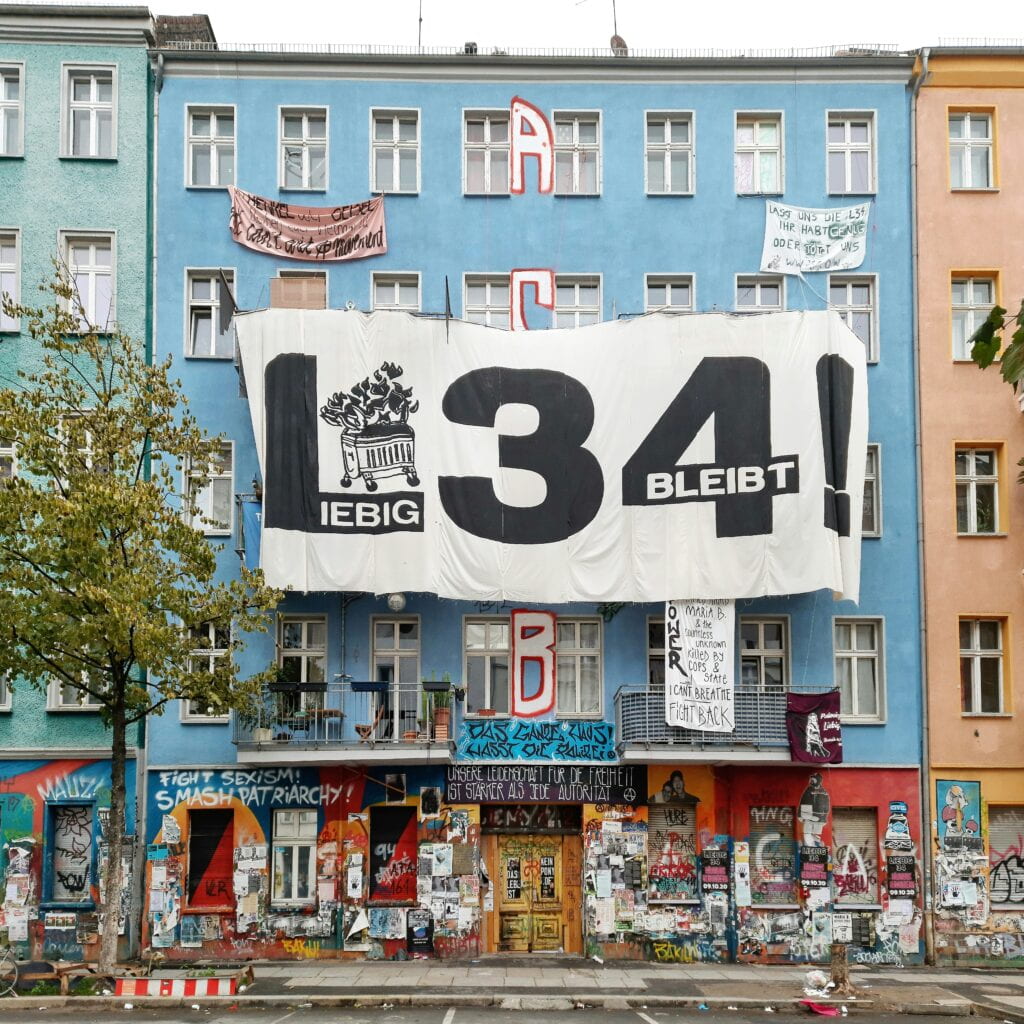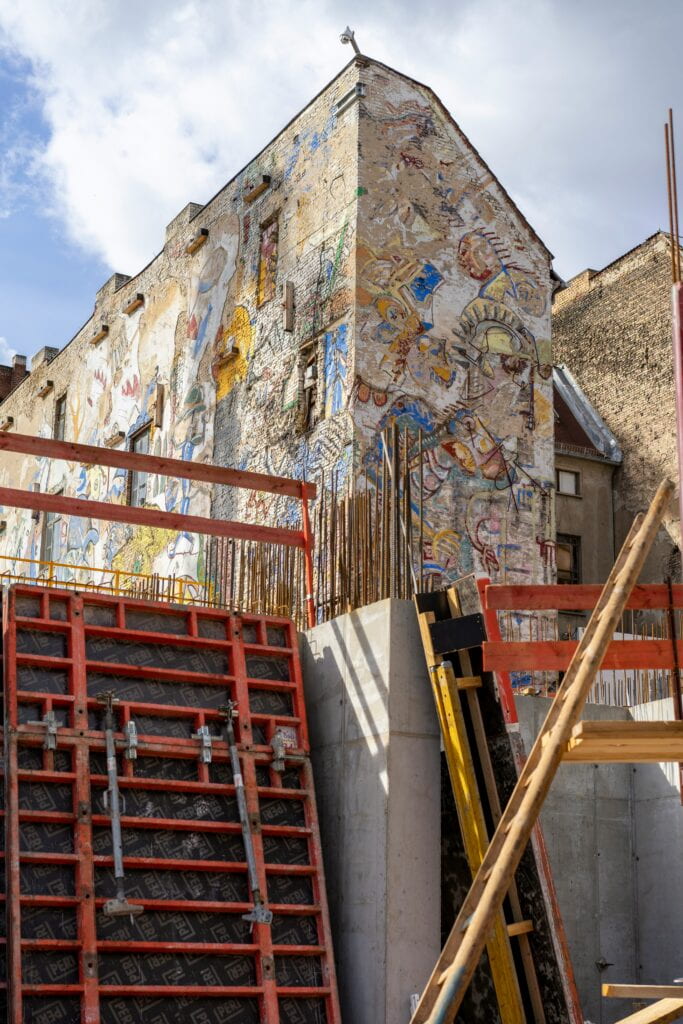
By Julia Meyers*
I have recently been working on a list of places to visit in Berlin when friends and family visit during the following months. What sites or experiences could possibly sum up this city in a way that reflects its culture as it really is, not as curated by the tourism industry? What small pieces of the city are truly reflective of Berliner history and tradition? It’s a trick question, but I have a working hypothesis: The Berlin Squats Tour.
I’ll be honest, I am partly kidding. I might have a sort of ethical dilemma turning people’s homes into tourist destinations. But if a tourist is attempting to discover what a city has to offer in terms of culture and history, Berlin’s squats serve this purpose beautifully.
Squatting in Berlin
Squatting began to explode as a movement in the 1970s in West Berlin, and continued in new fashions in former East Berlin after the fall of the wall. Squatter culture in this city has made impressions all over the world as a symbol of resistance and functional anarchism. Squatting is not a theory in Berlin, but an easily observed practice. There are hundreds of squats still in active use, showing us that this way of life is tangible and real, not just historically, but still today.
Squatting is not a theory in Berlin, but an easily observed practice.
Berlin squatters didn’t try to hide themselves either—the buildings have been clearly identified through political and artistic expression in the form of murals, banners, graffiti, flags, posters and slogans.
Artistic Squats
Squatters also organized to create spaces for artistic expression. Kunsthaus Tacheles is one of the most famous examples of artistic squats in Berlin, turning an abandoned department store into an artist’s safe haven in the 1990s. Tacheles came to represent alternative culture and social freedom, directly expressed through the art, highly experimental and unrestricted.
Tacheles came to represent alternative culture and social freedom, directly expressed through the art, highly experimental and unrestricted.

Now, the unavoidable. Especially for those of us who come to Berlin from North America, questions about Berghain are bound to come up. It has undeniably become a symbol of Berlin culture as it is perceived by the rest of the world.
The founders of Berghain were artistic squatters themselves, with their first club nights being hosted in “Bunker,” a techno venue in the Reichsbahnbunker Friedrichstraße, and eventually settling in an abandoned railway repair depot. By the early 2000s, they were expelled from this building and were in search of a new home for their experimental clubbing experience.
The culture of sexual freedom, expression, and experimentation that we have come to expect of Berghain and other renowned techno clubs in Berlin, is rooted in squatter culture itself.
The culture of sexual freedom, expression, and experimentation that we have come to expect of Berghain and other renowned techno clubs in Berlin, is rooted in squatter culture itself. To be clear, Berghain is not actually an example of squatting. The abandoned thermal plant they relocated to under the new name “Berghain” was legally leased to the owners from the very start. However, the nature and history of the building itself was the deciding factor. The location was everything; it crafted a narrative inspired by squatters that communicated a certain social and political culture to be expected inside.
Why should we care?
I am most interested in housing reform and justice in my studies, and so naturally a question I come back to frequently is how we should be addressing housing crises. My research so frequently focuses on formal policy, whether that be infrastructural, economic, or social policy. In so-called modern Western democracies, The State, in its many forms, is always central in facilitating and enabling policy-centered solutions to housing challenges. Berlin squatters have shown practical, tangible, and durable ways to challenge this assumption.
Squatters have taken the issue of housing crises into their own hands, not only finding physical places to live, but forming sophisticated political and social organizations. One has to wonder what exactly it was (and is) about Berlin’s political and social culture that made this so common and often incredibly successful. What can we learn from Berlin squatters about self-governance and the role of the citizen in defining housing reform and justice? Can it be replicated in an entirely different context?
The ultimate question I am left with is:
How can citizens autonomously address context-specific housing crises in lieu of government support, that is often lacking or contingent in ways that leave people suffering, houseless, or underhoused?
How can Berlin’s squatters help answer this question?
Main photo by Mark König on Unsplash: Rigaer Straße 94 in Berlin-Friedrichshain.
Check out this interactive map of Berlin squats from 1970 to today! https://berlin-besetzt.de/#
Check out this blog for more information on squatters current events and sites globally! https://en.squat.net/
 *Julia Meyers is a junior at NYU Gallatin studying urban design, architecture, and planning with a focus on ideas of shared space and public housing. She is studying at NYU Berlin for the spring 2024 semester.
*Julia Meyers is a junior at NYU Gallatin studying urban design, architecture, and planning with a focus on ideas of shared space and public housing. She is studying at NYU Berlin for the spring 2024 semester.